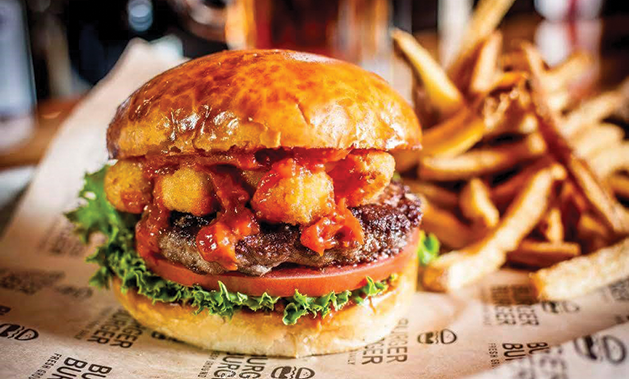
In 2011, Mark Largent set out to create a cheese curd for the food service industry that would be “Minnesota-Wisconsin” quality. A Wisconsin native familiar with the Minnesota State Fair’s curds, Largent wanted to make it possible for restaurants to offer curds as good as the ones at the fair. To find just the right recipe, he embarked upon a food tour of the Midwest, tasting all the curds on the market. After his trip, though, Largent had a stroke, and the business went on hiatus.
“The road to recovery and launching a new business has had its learning curve,” Largent says. “But we have taken all of our experiences and harnessed it into positive energy.” He created Curdtown Cheese Curds, and until 18 months ago the company’s six employees worked out of their homes; in March, they added six people to the team.
Now they operate out of a tidy Plymouth office, complete with a deep-fryer for taste tests. They’ve started to branch out into other areas of the country, and though it might be hard for Minnesotans to believe, many people have never heard of cheese curds.
“I wish we had a video camera at our food shows because you see it in people’s eyes,” says Monica Rask, director of operations. “Their first expression says, ‘Wow, this is really good.’ Cheese curds are a fun food. They’re not like a pickle. There’s only so much fun you can have with a pickle.”
Curdtown sources their cheddar from a dairy co-op in Ellsworth, Wisc. The fresh cheese goes directly from the creamery to the manufacturer without being frozen, where a special process holds the breading to the cheese. For their Cajun curds, the curds are seasoned before breading, so the flavor doesn’t burn off in the fryer.
“We really want to emphasize the cheese, so our product is two-thirds cheese to one-third breading so you really get that cheese flavor.” On his Midwest food tour, Largent checked out different breading equipment and types of breading. In the end, panko breading had the best flavor profile with cheddar. Panko doesn’t absorb a lot of oil, giving the curds a crunch without leaving a greasy feeling on your fingers, Rask says.
Rask has celiac disease that keeps her from eating cheese curds, but the company is developing new products that take food allergies into account. They hope to come out with a nonbreaded product and maybe one that doesn’t need to be fried.
Curdtown is always looking for innovative ways to use cheese curds. They recently partnered with the Sample Room to enter a national contest for a unique sandwich recipe, creating a bahn mi with pork belly, kimchi and cheese curds, topped with sriracha aioli. People put them on pizzas and breakfast burritos, and Burger Burger at the Mall of America has featured a couple variations on curd burgers. “There’s a lot of out-of-the-box things that you can do with them,” Rask says. “Nothing’s better on a bloody Mary, I can tell you that.”
Curdtown cheese curds are available at many restaurants locally, but they’re also distributed to restaurant chains across North Carolina, Kentucky, Tennesee, Virginia, Illinois and Arizona.
Curdtown’s goal this year is to sell a million pounds of cheese curds, which they expect to do. “This has not been an easy process, but it has been rewarding,” Largent says. “Now our goal is to bring a great curd to both a local and national audience. We are excited as to where this adventure leads us.”
Find Curdtown cheese curds served locally at the following locations;
Carbone’s, Broadway Pizza, Crave, Burger Burger, Willy McCoy’s, Saint Paul Saints, Excel Energy Center, The Sample Room, Monie’s, Knight Cap, Darby’s, and Cuzzy’s









